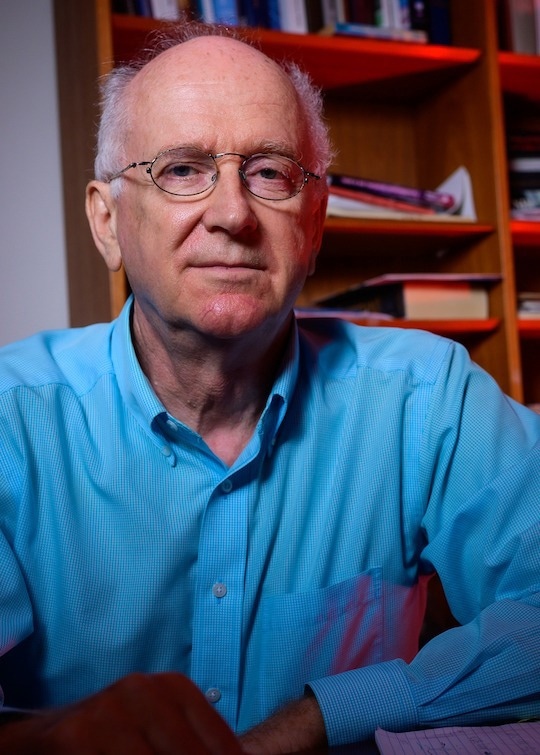A team of researchers composed of materials scientist Boris Yakobson of Rice University and his collaborators have found that a specific property of 2D ferroelectric materials could be used to enhance future devices.
 Boris Yakobson is Rice’s Karl F. Hasselmann Professor of Materials Science and NanoEngineering. Image Credit: Jeff Fitlow/Rice University.
Boris Yakobson is Rice’s Karl F. Hasselmann Professor of Materials Science and NanoEngineering. Image Credit: Jeff Fitlow/Rice University.
As detailed in the study published in ACS Nano, single-layer ferroelectric materials can be regulated to function as a nanoscale switch or even a motor by utilizing the fact that they bend in response to an electrical stimulus.
Single-layer or 2D materials are generally built of a single layer of atoms and are just a few nanometers thick. In recent years, they have gained considerable attention due to their electrical, physical, chemical, and optical properties, making them valuable in applications that range from medical and industrial technologies to consumer electronics.
2D materials are very thin and very flexible. In single-layer ferroelectrics, this produces an unexpected spontaneous, active bending behavior. The novelty we found in this study is that there is a connection or coupling between the ferroelectric state and the bending or flexing of the material. This work combines the discovery or prediction of a fundamental property of a class of 2D materials with a practical application angle.
Boris Yakobson, Rice University
Ferroelectrics are materials composed of positive and negative ions that can switch to create spontaneous polarization, resulting in the segregation of the ions depending on their electrical charge.
The interesting thing is that the atoms are not identical. Some of them are larger, and some are smaller, so the layer symmetry is broken.
Jun-Jie Zhang, Study Lead Author and Postdoctoral Research Associate, Rice University
The larger atoms are driven to one side of the 2D-material layer and the smaller atoms to the other side by polarization. This asymmetrical dispersal of the ions or atoms makes the material surface bend under a ferroelectric state.
So instead of remaining flat, in ferroelectric state the material will bend. If you switch the polarization—and you can switch it by applying electrical voltage—you can control the direction in which it will bend. This controllable behavior means you have an actuator. An actuator is any device that translates a signal—in many cases an electrical signal, but it can be a different kind of signal—into mechanical displacement or, in other words, movement or work.
Boris Yakobson, Rice University
The research studies 2D indium phosphide (InP) as a demonstrative of the class of ferroelectrics for which it forecasts this property.
“This new property or flexing behavior has to be tested in a laboratory for specific substances,” added Yakobson. “Its most likely use will be as a type of switch. This behavior is very fast, very sensitive, which means that with a very tiny local signal you can maybe switch on a turbine or electrical engine, or control adaptive-optics telescopes’ mirrors. That’s basically the essence of these actuators.”
“When you drive your car, you have a lot of knobs and switches and it makes everything really easy. You don’t have to crank open your car window anymore, you can just turn on a switch,” Yakobson concludes.
Yakobson is Rice’s Karl F. Hasselmann Professor of Materials Science and NanoEngineering. Taif University chemist Tariq Altalhi is a co-author of the study. The U.S. Army Research Office (W911NF-16-1-0255) and the Office of Naval Research (N00014-22-1-2753) aided the work, with computing resources offered through the ACCESS program by the National Science Foundation (grants 2138259, 2138286, 2138307, 2137603, 2138296).
Journal Reference:
Zhang. J. J., et al. (2023) Flexo-Ferroelectricity and a Work Cycle of a Two-Dimensional-Monolayer Actuator. ACS Nano. doi.org/10.1021/acsnano.3c00492.